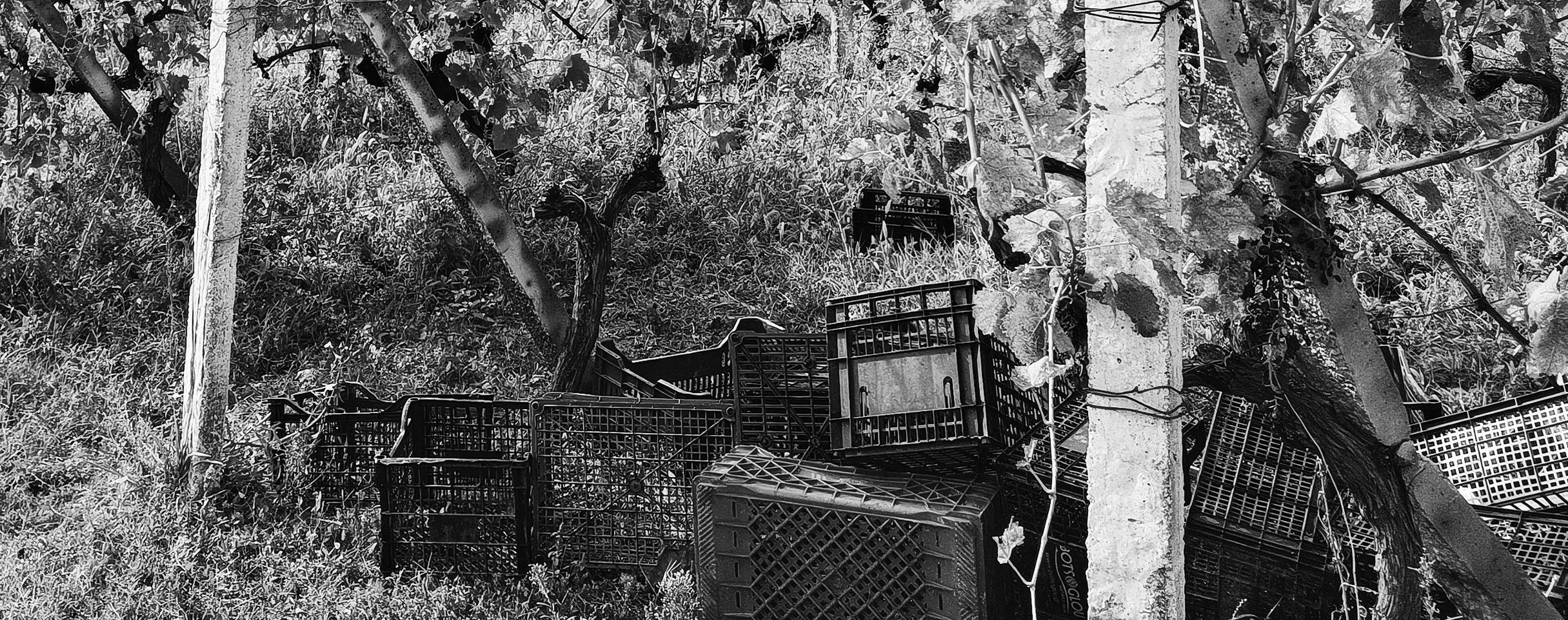Global figures show the 2023 vintage – estimated at 241.7-246.6m/hl – could be the smallest since 1961 (214m/hl), even lower than the historically small production volume of 2017 (248m/hl). It represents a decrease of 7% compared to the already below-average volume of 2022.
This is due to significant declines in major wine-producing countries in both the northern and southern hemispheres. Australia, Argentina, Chile, South Africa, and Brazil recorded year-on-year variations between -10% and -30%. Chile, the largest producer of wine in the southern hemisphere, saw yields plummet by 20% because of droughts and wildfires. The harvest was similarly bleak in Australia, where production was down by 25% on last year.
Yields were down 14% in Spain and 12% in Italy, where extreme weather and fungal diseases severely hit vineyards.
Only the USA and a few EU countries, like Germany, Portugal and Romania, experienced favourable climatic conditions that resulted in average or above-average volumes this vintage.

Speaking from Dijon, France, the OIV’s head of statistics Giorgio Delgrosso (above) commented: “A perfect storm in the north and south hemispheres has created this catastrophic situation.”
It means France, with a volume slightly above its five-year average, has overtaken Italy as the world’s largest producer.
The Good
The preliminary figures for the fourth largest producer on the world stage, the USA, show a harvest of 25.2m/hl – 12% higher than 2022, and 4% above the country’s five-year average. This growth was helped by cool temperatures and heavy winter rains in the Napa and Sonoma regions, bringing much-needed moisture to the vines after several years of drought.France has an estimated wine production of 45.8m/hl, perfectly in line with its 2022 level and 3% above its last five-year average. There were high volumes in Cognac, Corsica and Champagne, offsetting negative results in Bordeaux and Sud-Ouest, which were hit by downy mildew, and in Languedoc-Roussillon, which was hit by heatwaves and drought. In Bourgogne, production equalled the record reached in 2018. It's the second year running that the region has enjoyed above-average volumes. And the quality is said to be “stunning”, despite unstable weather conditions over the summer. The Chardonnay, Aligoté and Sauvignon grapes reached full maturity in perfect condition. After a rigorous sorting process, facilitated by high yields, some very fine juices have been extracted from the Pinot Noir grapes, with a great variety of aromas. Output was also at a good level in Beaujolais despite some hailstorms.
Several smaller wine-producing countries in the EU experienced positive growth rates: Germany – 9m/hl, +1% / 2022; Portugal – 7.4m/hl, +8% / 2022); and Romania (4.4m/hl, +15% / 2022). In these three countries, production volumes are expected to be also higher than their last five-year averages by 2%, 12% and 4%, respectively. Similarly,
Hungary (2.5m/hl, +1% / 2022), Bulgaria (0.9m/hl, +7% / 2022), and Slovenia (0.6m/hl, +6% / 2022) have all increased their production with respect to 2022; however, the expected levels are below their last five-year averages. Overall, in all these countries, the growing season was marked by hot and dry conditions, and the summer rainfalls led to high yields.
In Switzerland, wine production for 2023 is expected to hit 1.0m/hl, a level which is 4% higher than in 2022 and 14% above its last five-year average.
These were the bright spots. Elsewhere, things were not so rosy...
The Bad
In the European Union, wine production volume in 2023 is expected to be 150m/hl, which represents a year-on-year decrease of 11.2m/hl. In relative terms, this estimated volume is 7% lower than in 2022 and 8% below the last five‑year average. Overall, EU wine production this year represents 61% of the world total, a figure in line with the last ten years’ average.If this estimate is confirmed in the next months, this is going to be the third lowest production level recorded since the beginning of the century, after 2017 (141m/hl) and 2012 (148m/hl).
Italy recorded a notable decrease, estimated at 43.9m/hl (-12% / 2022). This is the smallest production since the historically low harvest in 2017. Many factors can be attributed to this low output, notably the heavy rainfalls that caused downy mildew to thrive in central and southern regions. In addition, some Italian vineyards were hit by floods, hailstorms, and drought.
Spain maintains its position as the third largest wine producer in the world with an estimated volume of 30.7m/hl, which represents a decrease of 14% relative to 2022 and -19% compared to its last five-year average. The 2023 level is expected to be the lowest in the last 20 years. The low harvest volume is the consequence of a severe drought and extreme temperatures that strongly hit the vines. Castilla-La Mancha, the largest wine-producing region, is expected to see a drop of 10-15% with respect to last year.
Austria, the seventh largest European wine producer, has an estimated wine production volume of 2.4m/hl (-7% / 2022), following a turbulent and challenging growing season that was marked by severe storms. Organic winemaker Karl Renner told me his conventional varieties were 50% down due to downy mildew, but his piwi varieties, such as Souvignier Gris and Muscaris, were in excellent condition.
The Czech Republic estimates a wine production of 0.5m/hl, a figure 13% lower than in 2022 and 14% below its five-year average.
Moldova is expected to produce 1.3m/hl of wine in 2023, a decline of 10% with respect to 2022.
Slovakia has an estimated wine production volume of 0.3m/hl, which is 20% smaller than in 2022.
In Georgia, wine production in 2023 is estimated to be 1.5m/hl, a decline of 28% compared to 2022, and 19% below its five-year average. This relatively low volume is due to unfavourable weather conditions such as heavy rainfalls, hail, and intense winds, which severely impacted the eastern wine regions of the country.
Things were just as bad in the southern hemisphere. After a record-high in 2021 and a relative decline in 2022, the wine production estimate for 2023 is 45m/hl, which represents not only a decrease of 19% compared to 2022 but also a decline of 18% with respect to the last five‑year average. This is the lowest production level recorded since 2003 and can be attributed to extreme climatic events that took place during the growing season in all major wine‑producing regions.
All major South American wine-producing countries have registered a significant fall in production with respect to 2022. Chile, the largest producer in the southern hemisphere, estimates its 2023 haul at 10m/hl, a volume 20% below last year’s high production and 18% lower than its five-year average. The harvest was severely affected by wildfires and droughts.
In 2023, due to spring frosts and hailstorms, Argentina’s wine production reached only 8.8m/hl (-23% / 2022). This is one of the lowest volumes recorded in its history.
Brazil produced an estimated 2.3m/hl of wine in 2023. This figure represents a decrease of 30% with respect to high production in 2022, and it is mainly due to a lack of rain in some important wine regions such as Rio Grande do Sul.
Uruguay, with an estimated production of 0.5m/hl, recorded a large negative variation with respect to last year (-34%), suffering from a severe drought coupled with heatwaves.
In South Africa, wine production in 2023 is estimated at 9.3m/hl, which marks a decrease of 10% compared to 2022 and 8% with respect to its last five-year average. This year the harvest has been mainly affected by fungal disease pressure, particularly powdery and downy mildew.
New Zealand seems to be the only country in the southern hemisphere with some relatively positive figures. Although production fell to 3.6m/hl in 2023 (-6% / 2022), it has positive growth with respect to the average observed over the last five years (+14%).
The Awful
Australia recorded a considerable reduction in wine production in 2023 with an estimate of 9.9m/hl, which represents a decrease of 24% compared to 2022. This is due to the combination of persistent rainfall, unusually cold temperatures and floods caused by the effects of La Nina. Moreover, inventory pressure led to the imposition of yield caps to reduce the oversupply of stocks.The European countries with the worst results are Croatia and Greece.
Croatia reports a production volume of 0.4m/hl in 2023, a level 41% below 2022 and 46% lower than its five‑year average. This low harvest was the consequence of adverse weather conditions and an outbreak of downy mildew. It scuppered my plans to produce a Malvazija in Istria as part of my #harvest2023 adventure, but I will try again next vintage. (I was also planning on making wine in Italy and Spain in 2023. Did I jinx everything? After making six wines in four countries in 2022 and planning four wines in four countries in 2023, I only managed one – a premium red wine in Albania.)
Greece expects wine production in 2023 to be around 1.1m/hl. This volume represents a significant decrease not only from last year (-45%) but also from its last five-year average (-50). This can be attributed to the heavy rainfalls during spring which caused grape diseasessuch as downy mildew and to elevated temperatures and drought in summer months that strongly impacted the vines.
What does it all mean?
OIV notes that falling global demand could mean the overall market remains relatively balanced – avoiding a drop in prices.“As economic growth in China has slowed since 2018, we’ve seen consumption and imports of wine drop significantly,” Mr Delgrosso said. “Low production is not good news, but lower consumption levels might help balance out prices.”
NOTE: This year’s figures are delivered with a note of caution, as there are still large countries like China, whose information is not available yet.













.png)






